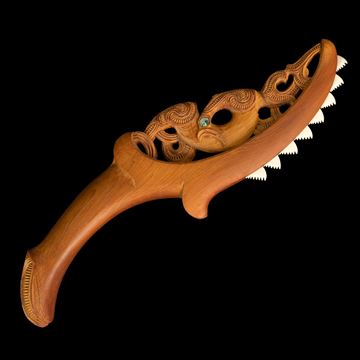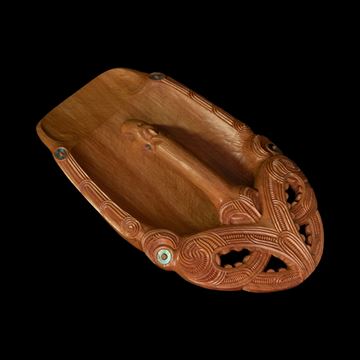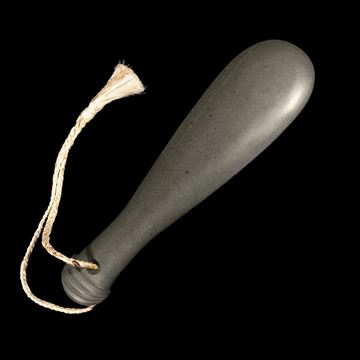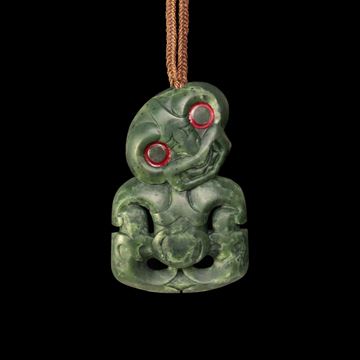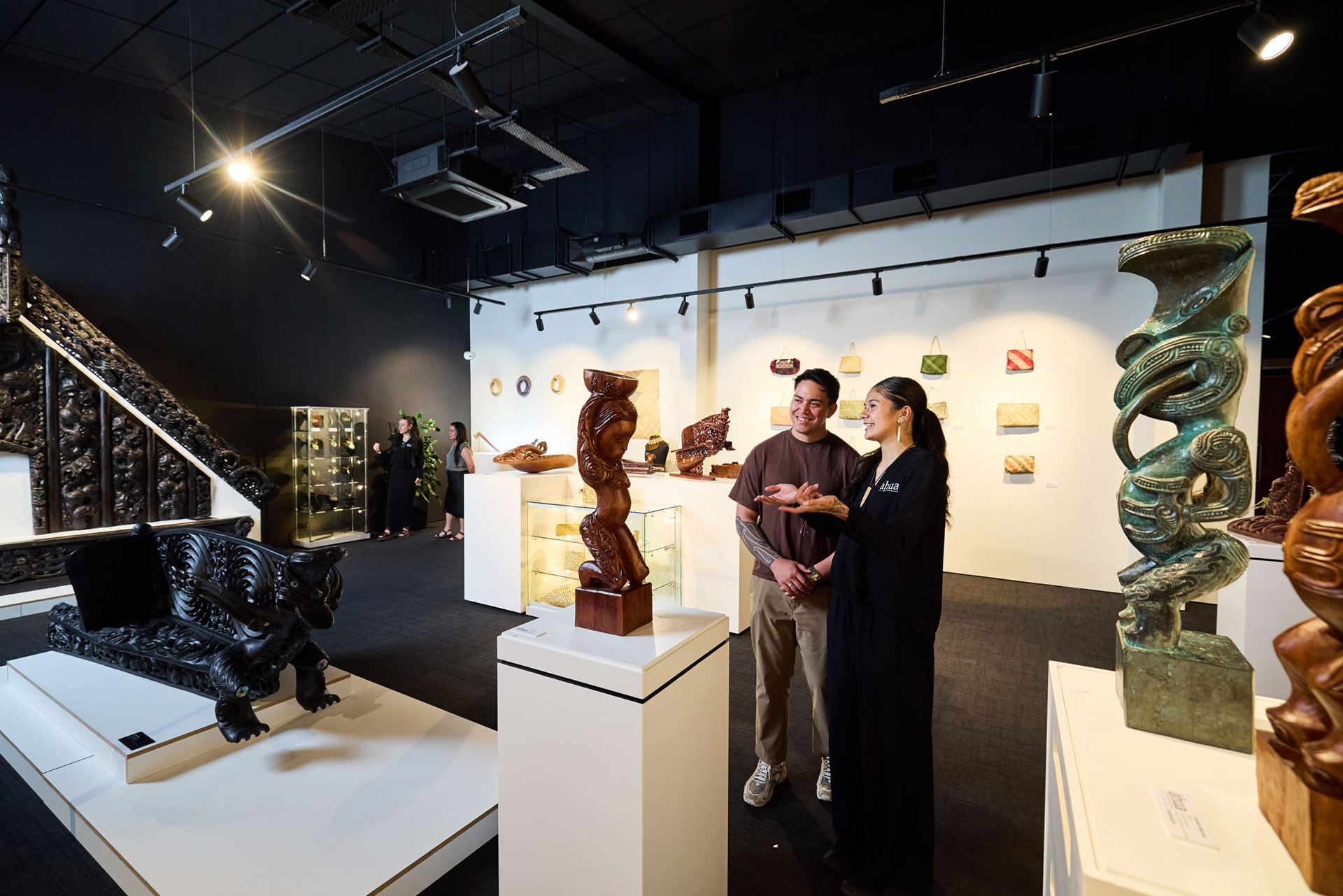
Āhua Gallery
Select Subcategory
Māripi - CI2895
Māripi are a traditional meat cutting tool. They are fashioned with a wooden handle and sharks’ teeth carved from Kōiwi (beef bone) to create a serrated edge.
Material: Rātā, Kōiwi (Beef Bone) & Pāua (Abalone)
Measurements: 340mm x 100mm x 30mm
$4,200.00
Tīheru (Bailer) - 4793GM
Often the bailer (tatā, tīheru or tā wai) was beautifully carved and some were given a name. In canoe traditions, tribal members still name the bailers used on the original voyaging canoes from Polynesia.
Material: Tōtara
Measurements: 180mm x 300mm x 50mm
$9,900.00
Patu Onewa - 6721PD
Patu (meaning to strike or hit) were typically fashioned from native hardwood, whalebone or stone, including our highly valued pounamu (greenstone). Patu were often sharp at their forward edge and were used with thrusting, jabbing and swinging blows.
Māori weapons are notable for their fine sculptural form and were designed for close hand-to-hand combat. No other stone-age war implements surpassed them in deadly effectiveness.
Material: Onewa (NZ Greywacke)
Measurements: 380mm x 100mm
$2,190.00
Hei Tiki - 6717PD
Hei tiki are the best known of all Māori adornments. Tiki are symbols of fertility that depict a new-born child. They are often family heirlooms bearing personal names and embodying their wearers lineage. As with most Māori personal adornments, hei tiki are often passed down generationally.
Material: Pounamu (Kawakawa)
Measurements: 88mm x 58mm
$2,600.00

